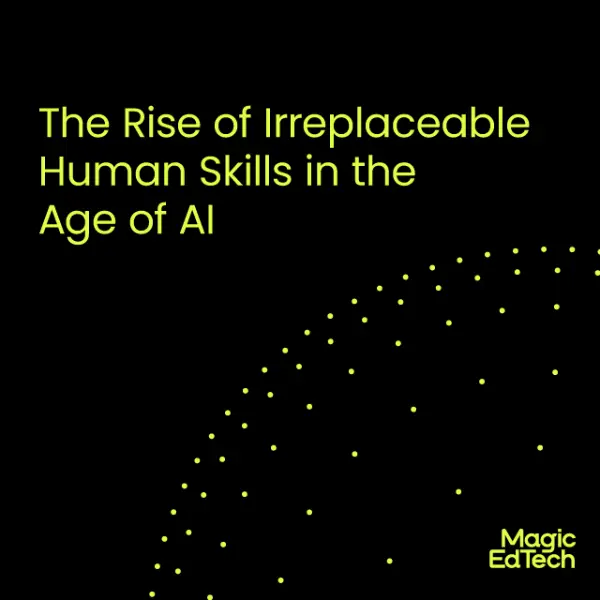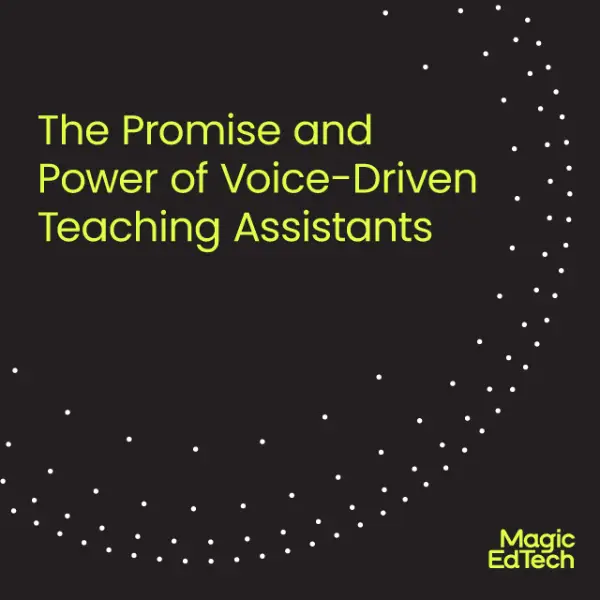How Climate Change Influences Education And Vice Versa
- 16 November, 2023
- Reading Time: 8 mins
Climate change casts its long shadow over the field of education, bringing both challenges and imperatives that demand our attention. Institutions of learning are not immune to our warming planet; they stand exposed and vulnerable to climate-related disasters.
The United Nations Framework Convention on Climate Change (UNFCCC) has sounded its call with a clear message: we must educate students, raise awareness of climate change, and usher the public into programs aimed at tackling this issue. The very future of our planet depends on our ability to not only grapple with climate change but to impart that knowledge to future generations.
The Forces Shaping Education Amidst the Climate Change Cataclysm
In a 2019 report, UNICEF stated that the total cost of climate change on education is likely to be in the scale of trillions of dollars.
If climate change continues, educating the next generation will prove less effective. Right now, it poses a risk to 2.2 billion children globally, with this number growing. Climate change has the potential to displace learners by destroying school infrastructure as well as roads and bridges that connect learners to schools. Typhoon Haiyan’s merciless sweep in 2013 serves as a grim testament; with over 2500 public schools damaged or destroyed. The loss of learning materials is also considerable, impacting academic performance.
The effects of climate change extend beyond the bricks and mortar of schools. It inflicts long-term health issues and disruption to their mental well-being, limiting their potential in the classroom. This Environment Protection Agency report quantifies how warmer temperatures influenced by climate change reduce academic achievement. The resulting financial implications ring to the tune of billions of dollars across each generation of students.
Urbanization will only intensify the effects of climate change, the first indicator being floods. During flooding events, children experience safety risks, psychological stress associated with displacement and loss, as well as health risks from water-borne pathogens and mold in submerged structures. A number of children will experience temporary or permanent displacement from their homes due to coastal flooding.
And that’s not all, varying temperature and precipitation patterns are likely to alter the habitat, range, and density of pathogens, vectors, and hosts that can cause disease among children. Lyme disease, carried by Blacklegged (deer) ticks, is one such disease.
Natural disasters brought on by climate change can isolate entire regions and cause permanent damage to logistics and supply chains. Many students whose families rely on agriculture as a source of income may lose their purchasing power, making it difficult to bear the weight of school-related expenses, be it the cost of transportation or learning materials. This results in absenteeism from school and dropouts and particularly affects learners in typically underserved communities, blocking their access to education.
The Need to Educate Students About Climate Change
Younger generations are acutely aware that climate change is set to cast a defining influence over their forthcoming years, shaping not only their locales and employment prospects but also their daily existence. In order to equip themselves for these changes, a foundational understanding of climate change and its far-reaching consequences is essential.
The pathway to action begins with a firm grasp of the fundamental principles of the subject. Within the United States, there’s a notable swell of support from both educators and parents, with over 80% in agreement, endorsing the inclusion of climate change education in the curriculum.
While certain states have made commendable strides in this direction, efforts must be directed toward building skills-based education based on action-oriented teaching methodologies. Education stakeholders must improve their capacity to comprehend, engage with, and wield influence during the climate crisis. This entails proactive climate change policies and the allocation of resources, at all tiers of governance. By having students and educators participate in climate mitigation and adaptation programs, we ensure they become a part of the solution.
Challenges in Teaching Climate Change
Lack of Inter-Ministry collaboration
Within regions, it’s a common observation that ministries of education operate in relative isolation from environmental ministries. This lack of interaction hinders the fruitful exchange of expertise and the cross-pollination of ideas. The failure to integrate climate change concerns into the blueprint of educational planning (and vice versa) results in weak policy and financing.
Lack of National Consensus
The U.S. lacks a unified accord on the importance of climate education. There is an absence of standardized science education guidelines since each state decides its curriculum, decentralizing efforts.
Voluntary Science Standards
While the Next Generation Science Standards (NGSS) advocate that climate change education begins from the fifth grade onwards, these standards remain voluntary. Forty-four states use them or similar standards, but the rest have created their own. The performance metrics across states vary wildly. A study conducted seven years after NGSS’s introduction revealed a stark divide. While 27 states exhibited commendable progress in climate education, a troubling 20 states faltered, with a few receiving failing grades. Notable among these are states like Alabama, Georgia, Pennsylvania, South Carolina, Texas, and Virginia, which registered some of the lowest scores.
Ambiguity in Teaching
This Mixed Messages report from the National Centre for Science Education states that although 75% of public school science teachers cover climate change, many only devote one or two hours to the topic during the academic year. While few teachers doubt that average global temperatures are on the rise, many do not accept scientific conclusions regarding human energy generation and consumption as the critical cause. Textbooks convey vague messages to avoid controversy in the approval process, particularly in states with strong ties to the fossil fuel industry.
Political and Industrial Influence
Climate education can be influenced by politics. In some states, party platforms oppose the teaching of anthropogenic global warming. They suggest equal time for teaching alternative theories despite the overwhelming scientific consensus. The fossil fuel industry provides educational resources that often promote a pro-fossil fuel agenda. They fund fossil fuel-sponsored programs that make it difficult for teachers to receive unbiased training.
Global Progress in Climate Change Education
As part of ESD for 2030 (Education for Sustainable Development 2030), UNESCO launched an 8-year framework to educate young minds and make education center-stage in climate action. ESD empowers learners to be climate-literate so they can make informed decisions and take responsible actions for environmental integrity.
This program, along with other cool education projects like the Global Action Program, Action for Climate Empowerment, and the ZOOM campaign, was discussed at COP 22, in the hopes of mobilizing youth and giving them the resources they need for climate action.
Climate action efforts with regard to education are also ongoing. For example, there are a number of initiatives centered on retrofitting infrastructure. With the backing of IrishAid, a few schools in Vietnam have fortified their structural resilience against floods and storms. Their measures include the installation of storm-resistant roofing, the replacement of antiquated doors, windows, hinges, and glass, and a fresh coat of paint adorning both indoor and outdoor surfaces as well as doors and windows.
Despite the challenges mentioned above, some US states are taking leadership roles in climate education:
- New Jersey: In 2020, New Jersey became the first state to mandate teaching climate change in all subjects starting from kindergarten. The state allocated $5 million for grants to support teachers, develop lesson plans, and evaluate climate education.
- Connecticut: In 2022, Connecticut passed a law requiring public schools to include lessons on human-caused climate change in their science curriculum. This ensures that politics or budget cuts will not influence climate education.
- Oregon: Educators in Oregon are currently pushing for a bill requiring climate education in all subjects from grades K to 12.
How to Advance Climate Change Education
To address the pressing challenge of climate change, there’s a compelling case for enhancing educational curricula within the United States. These enrichments should encompass the following dimensions:
Climate Education
An imperative step involves integrating climate education into science, geography, and social studies curricula. This integration serves as a potent instrument for raising awareness about climate change and its far-reaching consequences. It equips students with the knowledge and insights needed to navigate this complex issue.
Resilience Education
Equally vital is the inclusion of coursework that delves into disaster preparedness, mitigation, and the role of resilience in confronting climate-related challenges. This equips students with the skills and knowledge to withstand and adapt to the impacts of a changing climate.
Environmental Literacy
Environmental literacy can help learners understand the interplay between ecosystems and human activities. It can change our actions within the natural world, nurturing a sense of responsibility and stewardship.
Sustainable Practices
An emphasis on sustainable practices, including lessons on energy conservation and waste reduction, plays a pivotal role in encouraging responsible environmental behavior. These lessons help students make eco-friendly choices and practice sustainability in their daily lives.
Critical Thinking
Critical thinking skills equip students with the intellectual tools needed to critically analyze climate-related information, make informed decisions, and actively participate in climate action. This cognitive aspect paves the way for a generation of informed and proactive citizens.
How Can You Make a Difference?
Parents, students, and communities must work together to improve climate education. Here are a few ways that can help:
Advocacy
Advocacy is a potent tool that parents and like-minded individuals can use to champion climate education within their communities. A valuable first step is active participation in school board meetings, where you can voice your support for the integration of climate education standards. This collective engagement helps lay the foundation for effective climate education within the educational system.
Support Teachers
Teachers who wish to educate about climate change sometimes find themselves in politically charged waters. As parents and community members, offering support to these educators can boost their confidence in delivering effective climate education despite the prevailing pressures.
Student Advocacy
Students possess remarkable potential for change. They can advocate for a climate-conscious future by opting for sustainable choices and engaging with political candidates. Corresponding with congressional representatives, and holding elected officials accountable for their stance on climate issues, their voice, and collective actions, are a formidable force for change.
Comprehensive Approach
Climate education should extend beyond classrooms and involve the entire community. It’s not just about what happens in schools; it’s a collective effort to address this critical issue.
In response to the growing demand for climate education, educational institutions and parents must work together to provide valuable resources and support for teachers.
Our focus should be on supporting teachers, scientists, and climate experts to create comprehensive lesson plans that integrate climate change into all subjects for students from kindergarten to 12th grade.
Did we miss any details, or would you like to add more? Share your thoughts with us at marketing@www.magicedtech.com.





